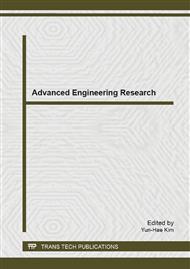p.98
p.103
p.108
p.114
p.122
p.126
p.133
p.137
p.142
Study on the Ground Response Analysis for Stiff Soil
Abstract:
In order to test the applicable of the seismic response analysis procedures SHAKE2000 and LSSRLI-1 for class ІІ site, 17 stations and 35 underground strong motion records of KiK-net are selected from Class ІІ site. 210 working conditions are used to verify the applicability of the two soil seismic response analysis programs at Class ІІ site. These two programs are used to calculate the selected working conditions, giving the peak acceleration of the ground, the shear strain and the ground acceleration response spectra. By analyzing the results of the two programs and the measured results to assess the degree of difference between the two methods and which program is closer to the real situation. Studies have shown that in class ІІ site, in most cases, the results of SHAKE2000 and LSSRLI-1 differ little. While comparing with the actual records, SHAKE2000 is closer to the strong motion records.
Info:
Periodical:
Pages:
122-125
Citation:
Online since:
April 2014
Authors:
Price:
Сopyright:
© 2014 Trans Tech Publications Ltd. All Rights Reserved
Share:
Citation:


